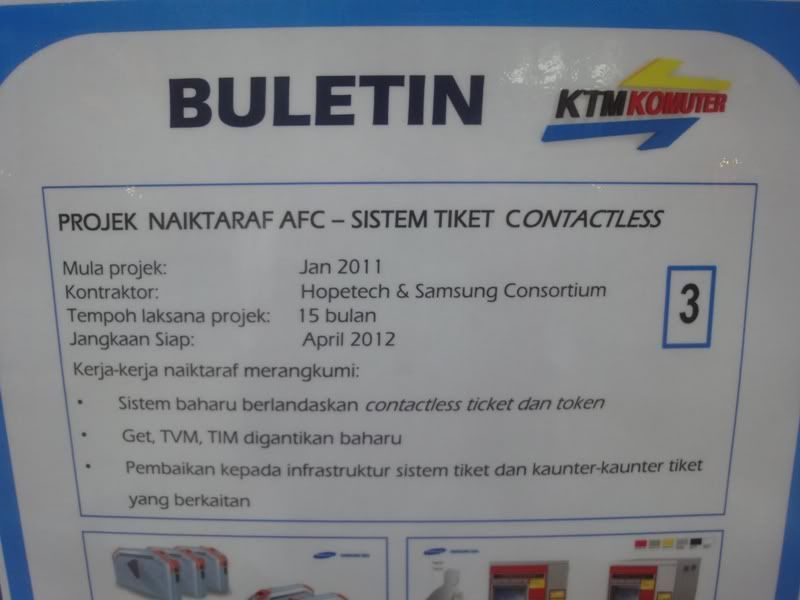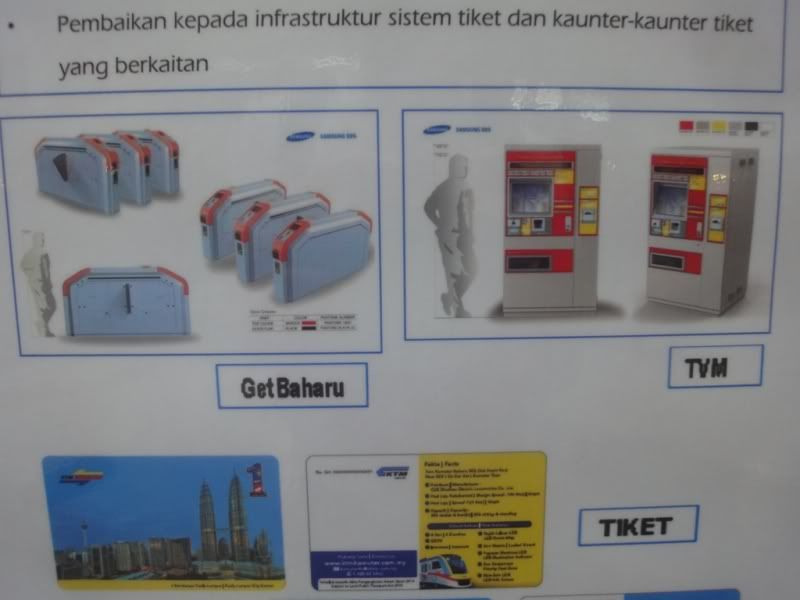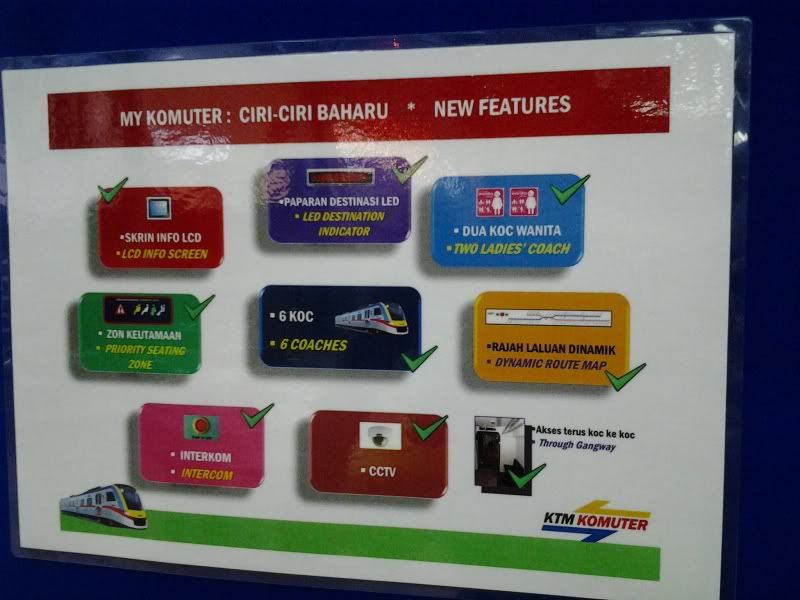Chinatown traders cry foul over shock MRT acquisition notice (Malaysian Insider)
By Melissa Chi and Tatjana Pupol
August 06, 2011
Shop owners and traders in Chinatown meet to discuss the Klang Valley MRT project. - Picture by Choo Choy May
KUALA LUMPUR, Aug 6 — Shop owners and traders in Chinatown are reeling from shock as a number of them received land acquisition notices over the course of this week, despite being assured previously that Chinatown will not be affected by the Klang Valley MRT (KLMRT) project.
However, Land Public Transport Commission (SPAD) chief development officer Azmi Abdul Aziz has pointed out that the number of properties to be acquired to make way for the multibillion ringgit rail project had been reduced by 50 per cent.
He explained that 70 per cent of the 51km line would now occupy road reserves while the remaining 30 per cent would encroach into private properties.
“We have made an agreement with the parties involved and they have accepted that the line will cut through their property,” he had said.
Lee Wai Cheng, who owns a shop lot and runs Yook Woo Hin Restaurant on Jalan Petaling, told The Malaysian Insider that she had just received the notice yesterday. The restaurant was founded in 1928 by her grandfather.
“Engineers had told us there is no need for the government to acquire our land.
“Judging from the plan, it looks like a road-widening exercise,” she said, adding that she suspects it was for the 100-storey tower project.
The 50-year-old claimed that the KL City Plan 2020 had included Chinatown as one of their heritage site in their most recent draft.
Choy Foong Meng, who owns Yi Xin Craft and Gifts Sdn Bhd in a rented shop lot on Jalan Sultan for the past 15 years, said the last minute notice has affected their lives.
“They should have told us earlier. The businesses support everyone of us here,” she said, adding that there needs to be proper compensation given by the government.
“This is very cruel of disrespectful of them. They should consider how many people’s lives they are affecting.
“Why can’t they come clean with us and tell us what they want. At least we know how to plan,” the 55-year-old said.
Choy said if the government has such power to just take any property, there is no meaning to the word “freehold” anymore, adding that a number of the land affected were freehold.
The affected areas previously announced are Section 4 and 6 of Kota Damansara; Pelangi Damansara condominium; Taman Tun Dr Ismail; Damansara Utama; Section 17/52 Petaling Jaya; Bukit Bandaraya; Jalan Bukit Ledang; Bukit Damansara; Taman Desa Aman; Taman Connaught; and Taman Koperasi. Chinatown was not mentioned.
The KVMRT project is considered the largest infrastructure project ever undertaken in Malaysia and the first phase alone has been estimated to cost upwards of RM20 billion.
Steven Yong, 65, who runs Lok Ann Hotel explains which areas are affected.— Picture by Choo Choy May
Steven Yong, 65, had just recently taken over Lok Ann Hotel, which is popular among backpackers, said it is unfair to him for the government to give such a short notice.
The building owned by Madam Tan, 68, had started running the hotel since the 1930s and is being managed by the 4th generation now.
She said she’s in “terrible shock” by the news.
“I’ve been going to the public viewing of the MRT project and for the three times I’ve been there, I’ve been told Chinatown will not be affected as the line will be underground,” she said.
Tan said an employee in UO Superstore, better known as Ocean, had told her that they have to stop doing business by September 30 and have to clear out the shop by October. The building will be acquired as well.
The Malaysian Insider understands that more than 50 stalls in Chinatown will be affected.
Chong Kah Fatt, 33, whose family owns a shop on Jalan Sultan since 1983, told The Malaysian Insider the Land and Mines Director-General had said in the preperty section of the English daily The Star’s question and answer article that lands will not be acquired if the MRT line runs underground.
Khong Kim Lyew, 63, who is a tailor and rents a shop on Jalan Sultan, told The Malaysian Insider that the business was started by his grandfather almost for a century ago.
“Everybody should be worried here. We were born and bred here, it has sentimental values. Four generations of my family were born and bred here and if this comes to an end, it will be devastating,” he said.
Khong said while he had not received any notices yet, there were officers from the Ministry of Finance who had came with a floor plan and made measurements of his shop but he has yet to hear from them.
The shop owners and tenants are bringing in their own valuers so they can have their own valuation report during their individual hearing with the Department of Director General of Land and Mines (KPTG).
The issue of land acquisition is governed by the Land Acquisition Act 1960 and the National Land Code and the body that is responsible for the issuance of notices pertaining to land acquisition is the KPTG.
The procedures for land acquisition as outlined under Section 4 of the law.
According to the Environmental Impact Assessment (EIA) on the project’s original alignment, a total of 473 lots of land totalling 97 hectares were set to make way for the rail line, in areas as diverse as upscale as Taman Tun Dr Ismail here and Malay reserve land along the rail line.
Of the lots that are set to be acquired, 103 are located within the Sungai Buloh-Semantan stretch, 163 along the underground section between Semantan and Maluri in Kuala Lumpur, and 207 along the Maluri-Kajang segment.
Earthwork formally kicked off a month ago on July 8 on the MRT’s first line from Sungai Buloh to Kajang (SBK) but transport authorities have admitted they have yet to pin a total cost for the project, which has been described as the country’s most expensive ever construction project.
The shop owners and traders affected will be meeting Bukit Bintang MP Fong Kui Lun here on August 9 to discuss their options and will be meeting with the project’s owner and operator Syarikat Prasarana Negara Berhad representatives on August 11.
KVMRT: We certainly hope that SPAD and Prasarana can make immediate meeting with those who are affected. So far, we still wait for more details.
More news updates:
Acquisition is for people’s safety, says expert (The Star)










































